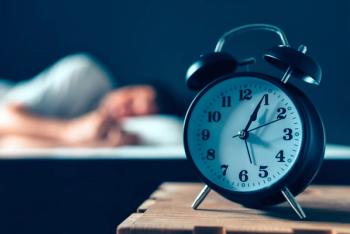
Adult Bullying and Sleeping Problems
Peer victimization can cause patient distress and health risks, including issues with sleep.
Patients can experience sleep dysfunction due to many different physical, psychiatric, and psychological causes. Being an adult victim of peer victimization is one of the causes that is becoming more recognized in the medical literature as a source of patient distress and health risks. The terminology to define this type of experience is inconsistent and vague, and it can be described as being a victim of bullying, intimidation, harassment, narcissist abuse, or being a part of frenemy relationships.1 Generally, the intensity is defined as mild to moderate, and it is seen as a recurrent behavior. There is not an established screening tool that is used to identify adult recipients of peer victimization, and some patients might not consciously consider it a cause of their health issues. In fact, some patients may not recognize
Traditionally, patients and physicians consider bullying to be a childhood problem. Adult peer bullying can occur in the workplace, in social settings, and in family situations. It is loosely defined as a recurrent pattern in which 1 or more people demonstrates power through actions such as belittling, insulting, embarrassing, dividing work or compensation unfairly, and more. One particular type that has been described is the indirect experience in which a person becomes confused about whether someone is their friend or not due to inconsistent patterns of behavior.1 The effects of peer victimization can vary depending on many factors, including the recipient’s baseline coping mechanisms, the level of connection they had anticipated to have with their peers, the naturally expected duration of exposure, and the estimated future need for contact. Workplace bullying has been found to affect witnesses, people who personally experience the behavior frequently, and people who experience the behavior infrequently. Those who experience the behavior more frequently are more likely to experience disturbances outside of work, such as sleeping problems.4
Interestingly, a unique study published in Frontiers of Psychology noted that participants who were found to have the miR-146a GG genotype were more likely to experience associated distress and insomnia when they were exposed to negative social acts in the workplace. While the results were unique, the researchers suggested that the genetic variability of the participants could affect the response of the hypothalamus and functions of the autonomic nervous system that play a role in
Managing sleeping problems requires a comprehensive approach to diagnosis and intervention. The treatment of sleep impairment that is associated with adult bullying may be more effective if it is focused on the emotional and behavioral aspects, rather than pharmacologic therapies, such as
The initial step of awareness and defining the problem can help direct the discussion so that patients can express their preference for which approaches they would like to consider for managing the problem. Physicians can directly offer reassurance that the patient’s experience is not uncommon, and that the experience is recognized as a cause of distress, even among health care professionals.6 Strategies for patient support and symptom management may include individual therapy and direction to consider participating in a support group. Goals can include learning ways to avoid the external cause of distress. Patients may also benefit from follow-up to monitor changes in sleep patterns and the cause of the sleep problems.
Dr Moawad is associate editor, humanities in Neurology; clinical assistant professor, Case Western Reserve University School of Medicine, Division of Medical Education; and editor in chief emeritus of Neurology Times (2017-2019).
References
1. Wójcik M, Flak W.
2. Nielsen MB, Pallesen S, Einarsen SV, et al.
3. Hansen ÅM, Gullander M, Hogh A, et al.
4. Hansen AM, Hogh A, Garde AH, Persson R.
5. Rajalingam D, Jacobsen DP, Nielsen MB, et al.
6. Alshawush K, Hallett N, Bradbury-Jones C.
Newsletter
Receive trusted psychiatric news, expert analysis, and clinical insights — subscribe today to support your practice and your patients.














